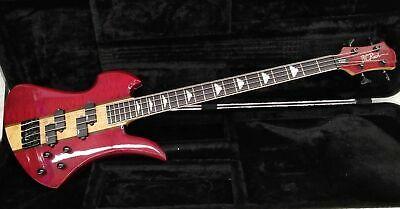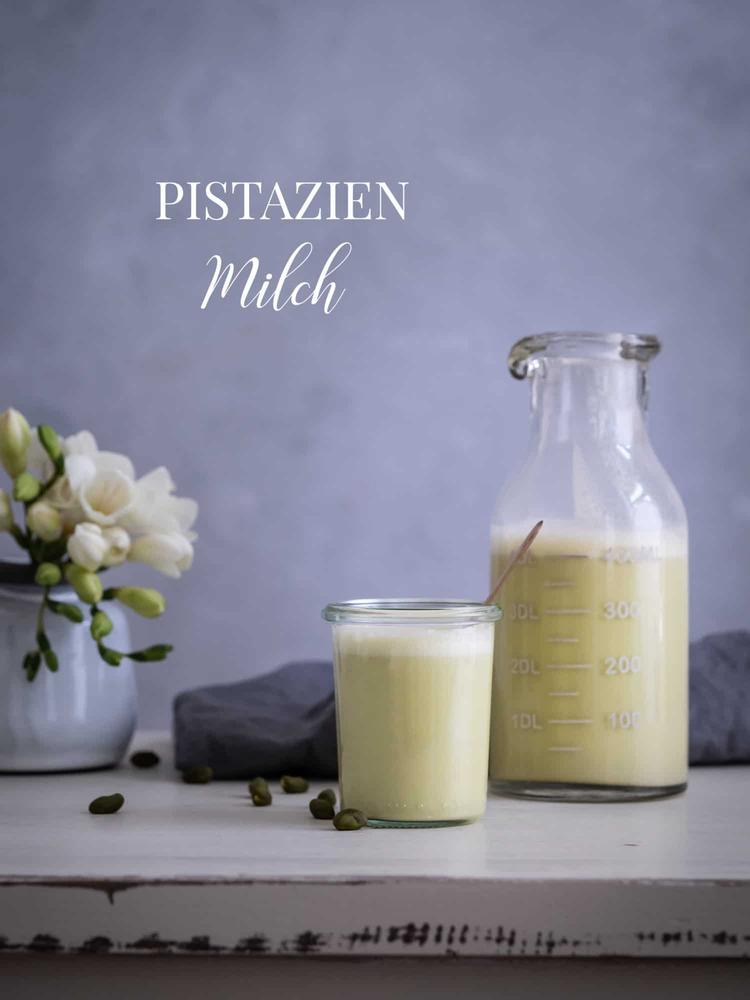
B.C. Rich lists this extravagant bass as "traditional" in his "Legacy" series, and I can vividly imagine the dialogue in the shop: "Hey, I'm looking for a very traditional bass." - "No thing, I've got the B.C. Rich Mockingbird for you!” – “Huh…?”
In the B.C. Rich universe, of course, it's true, because the Mockingbird is a classic shape from the 70s. Let's take a look at how the Heritage Classic resembles the now highly regarded originals and what has been modernized. For the original, I recommend reading the vintage article in the January issue again, it contains everything you need to know!
AdSTYLISCHER BIRD
The straight neck, which became one of THE characteristics for fine basses in the 70s, and then entered the mainstream via Japanese instruments, is just like in the old days. Three strips of maple are glued to it. Contrary to what the data sheet on the website claims, the two strips of wenge do not actually belong to the neck, but separate it from the body, like on the prototype. For the body, B.C. Rich calls Mahogany, but in fairness credits it with "Nyatah Palaquium," known as Nyatoh or (incorrectly) Nato. The Southeast Asian wood has been popular for decades because it resembles mahogany in structure and properties. The composition of the woods can be clearly seen on the back, at the front a layer of quilted maple covers the glued body sides and the continuous maple neck, but allows the wenge stripes to be seen.
The ebony fretboard completes the wood composition. It contains 24 jumbo frets and chic split diamond inlays. The board is cleanly edged with white binding, dots on the flank serve as orientation. The 2/2 headstock has a classic look and the correct tilt to pull the strings into the Graph-Tech saddle with the necessary pressure without a hold-down. The modern mechanics are no longer ultra-heavy Grover tuners, but are reminiscent of Gotoh.
The bridge has been significantly modernized. The factory-fitted D'Addario NYXL strings, measuring .45 to .105, are simply hooked into the flat bridge. The saddles can be adjusted in height and octave and then fixed. Actually good, in fact, to adjust the octave, the string always has to be relaxed, the rider loosened, shifted, fixed, tuned again ... and that until it fits. But then everything is bombproof. The strap pins are conventional types with large plates that hold the strap securely.
An EMG-PJ couple is responsible for the electrical conversion of the oscillations. Contrary to what is described on the website, it is regulated with a volume control per pickup plus one treble and one bass. A quick look under the hood shows that the volume pots are soldered, while the BTS EQ is connected with EMG connectors. Black paint in the cut-out is supposed to suggest shielding, but does not conduct, which is then not changed by the cover, which is neatly covered with shielding foil - which is not terribly wild, since EMGs are known for their insensitivity to interference.
The necessary battery can be found in an extra compartment with threaded screws, a metal holder for the 9V block, and a solid clip. This is of course one of the main differences to the vintage original, the complete shift mechanism and the double P assembly had to give way to modernization. Maybe it will come again in a different model...
LEFT-HAND
The front strap pin was on the first Mockingbird bass, known to fans as the shorthorn, at the level of the 15th fret. The following longhorn moved it to the 17th fret. The Heritage Classic takes it one step further and places it at the level of the 21st fret. This moves the low registers quite far to the left, even when sitting I have to stretch my arm quite a bit. On the other hand, the higher positions are sensationally easy to access, so the Mockingbird fully exploits the possible advantages of a continuous neck.
On the belt it happens as it has to happen, even the relatively light mechanisms cannot prevent a heavy top-heaviness. The only thing left for me is the John Entwistle memory posture, or the left hand is condemned not only to grasp the correct notes but also to hold them up. The neck lies very well in the hand, there's nothing there.
The otherwise perfect workmanship shows a tiny, not even visible flaw: At the level of the third fret there is a rough spot on both sides of the binding, as if someone had left a fingerprint in the not completely dry varnish. On the other hand, the matting of the playing area on the back of the neck is very clean with very smooth transitions to the rest of the high gloss - good for the playing feel. Furthermore, the bass compensates me with perfect adjustment and in this sense easy playability.
Sustain is long lasting and stable, as I've come to expect from a neck-thru bass. The body, which is not exactly light, resonates properly and the somewhat compressing dry tone carries the game in the most pleasant way. The EMGs deliver the usual clear picture to the amp, the control with two volume potentiometers is a bit unusual. But I quickly got used to it and, thanks to the even control paths, am rewarded with fine mixtures. The bass EQ gives a decent boost, which benefits the bridge pickup in particular, which sits very close to the bridge. Good for solos and biting, effect-laden sounds!
In tandem with the P pickup, everything is fine in the low pressure range, it can also be very snappy, which can be increased with the treble potentiometer. This also works very well with reductions, it is worth trying out the possible settings. Alone, the P pickup sounds typically like Preci with EMG coloring, overall the Mockingbird delivers a clean broadband.

SUMMARY
Especially with metal bands, one can assume that they dress up for a performance and often enter the stage with outfits that are not very suitable for everyday use. That's probably how you have to see the Mockingbird: as part of the stage show. It doesn't necessarily have to be metal, the noble look and the good sound are also suitable for completely different genres. There's definitely a tradeoff in comfort, but not in build (with minimal compromise on the test bass) and sound, but there's tons of style and appeal. In the future I would like to see a vintage correct re-imagining of the Shorthorn Mockingbird, but in the here and now the modern Mockingbird cuts a fine figure!
PLUS
MINUS
(published in Guitar & Bass 03/2021)
Tags: bass, bass test, electric bass, TESTSguitar & Bass 4/2019 DigitalINTERVIEWS: Bryan Adams, Tommy Emmanuel, Devin Townsend+++SPECIAL: Jazz guitar in Germany+++Tiefer. Harder. Wider: The ERG Highlights of NAMM 2019View productComment on this article
- Rarity 😉
It's completely unnecessary that you chalk up the top-heaviness as a minus rating when summing up the B.C.Rich Mockingbird Bass! Here you can see again that the B.C.Rich brand label doesn't seem to be that important to you .Clearly: all, but really all B.C.Rich electric guitars/electric basses have always been top-heavy since the beginning of their production in the early 1970s/75s, this really applies to all model types of the said manufacturer, and consequently it was and to this day this is absolutely not a criterion among insiders of these bizarre guitars! It may well be that the undoubtedly cult brand label is not necessarily loved by every guitarist, true to the motto: you love these visually very striking guitars, or you hate them. As is well known, there is nothing in between! Personally, I absolutely can do not make any negative statements about this guitar manufacturer, because I love these extraordinary guitars, because they were built very cleanly and sound really "brutal". Especially the B.C.Rich guitars from the "golden era" in the mid-1980s with the special additional designation "NJ-Series/Made in Japan" are nowadays very sought-after rarities, which you will hardly find here in Europe anymore, and in the USA or in Asia only have to pay dearly with great luck.B.C.Rich guitars are cult.
Reply to this comment
Write a comment Cancel reply
Your email address will not be published. Required fields are marked with *.
Privacy policy
You might also be interested in this
Test: Gibson SG Special Tony Iommi Signature
Read more
Squier 40th Anniversary Collection: All that glitters is gold?
Read more
Music Store Edition: Fender Blues-Junior IV LTD tested
Read more
Classifieds Heroes: Hohner Professional PJ Bass SX
Read more
Review: LTD Deluxe Phoenix-1004
Read more
Review: Jones Musical Instruments Gresham Basses
Read more







